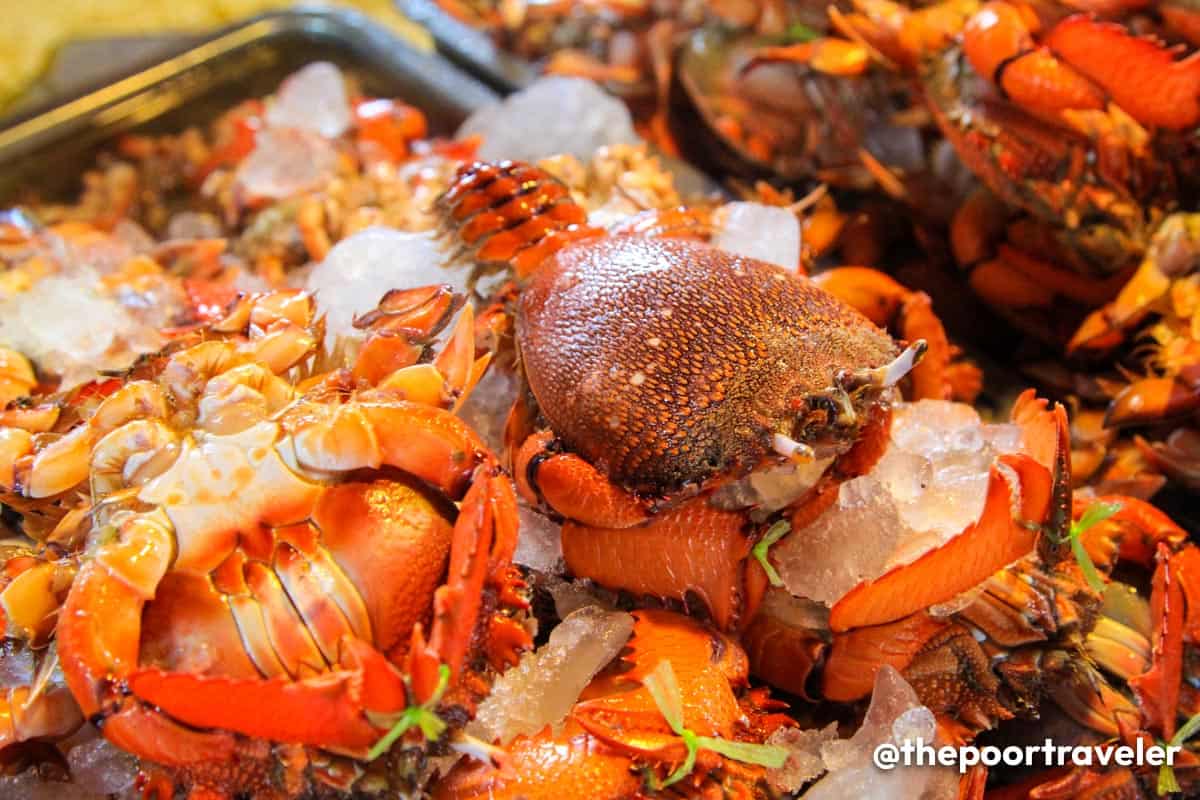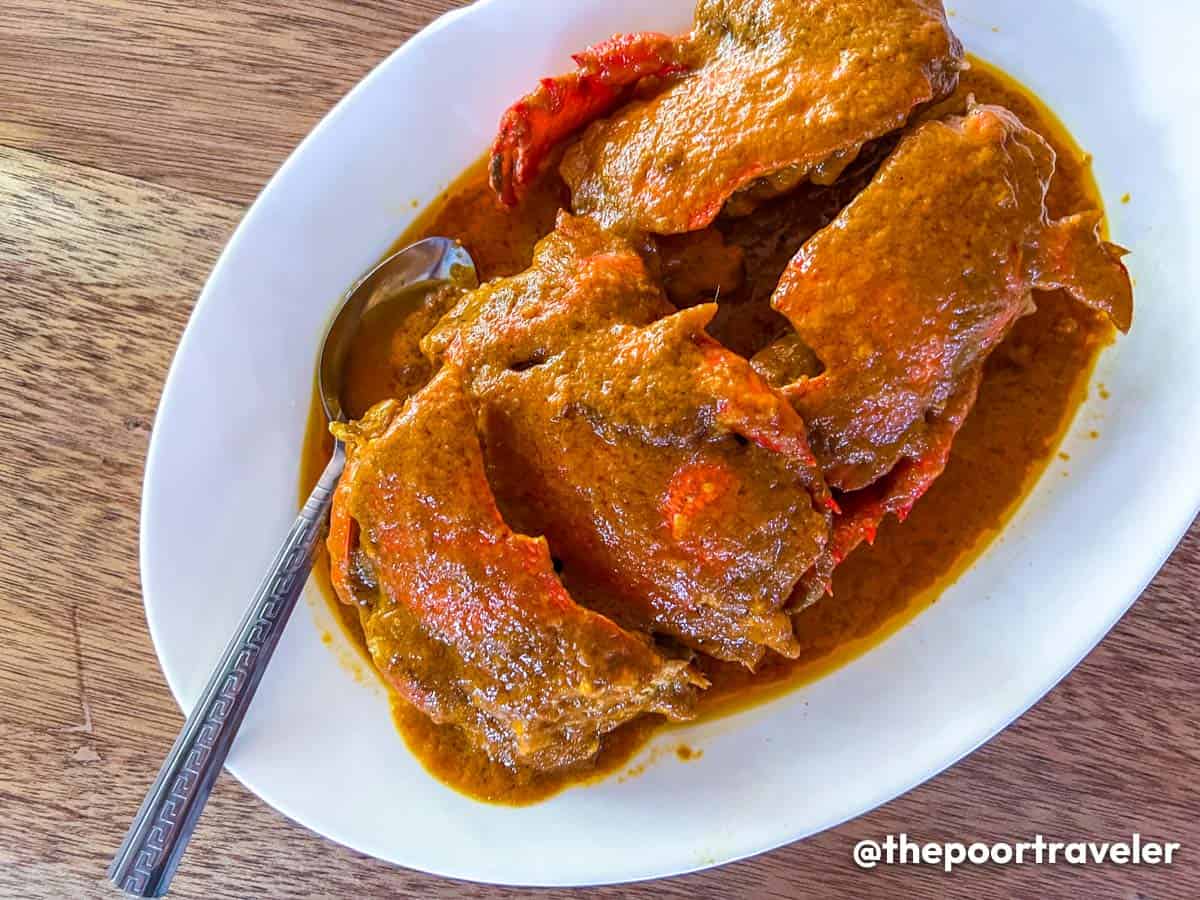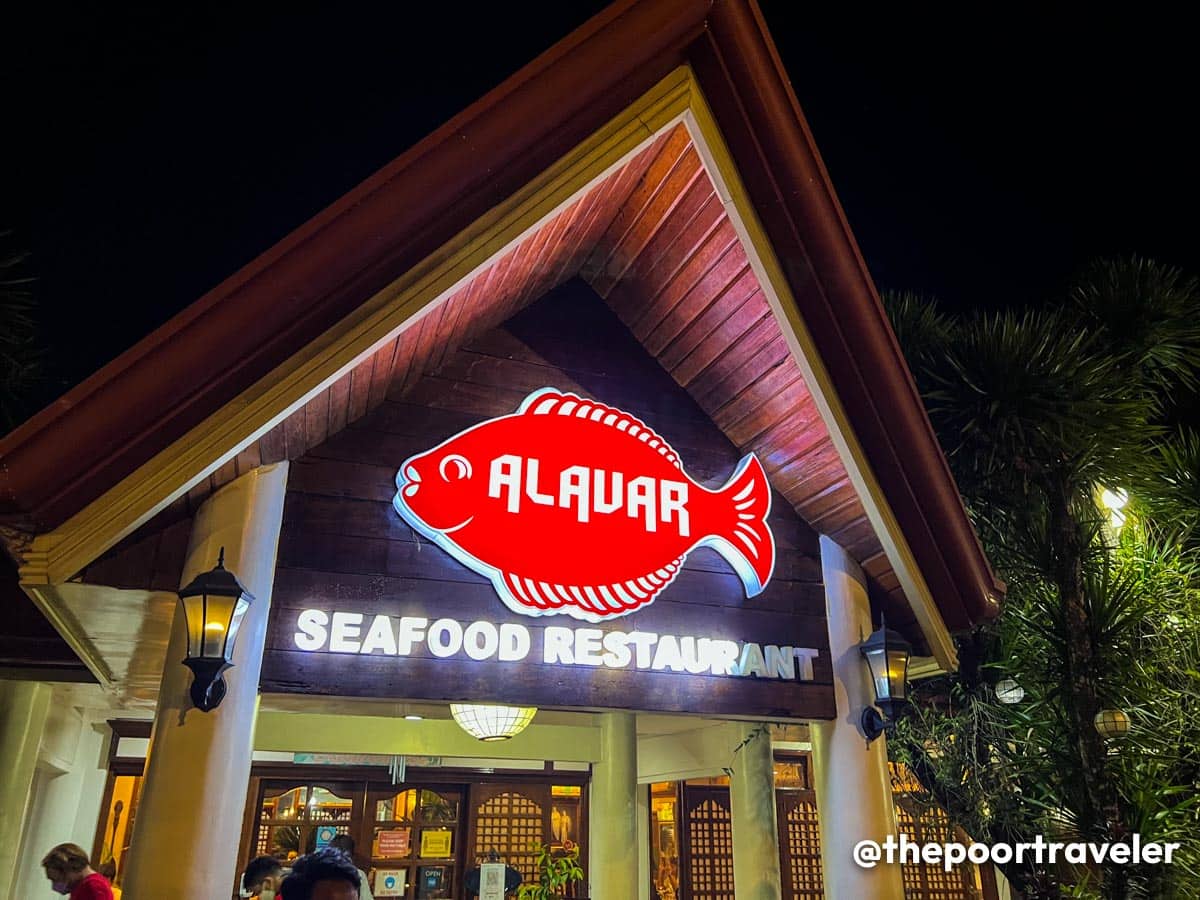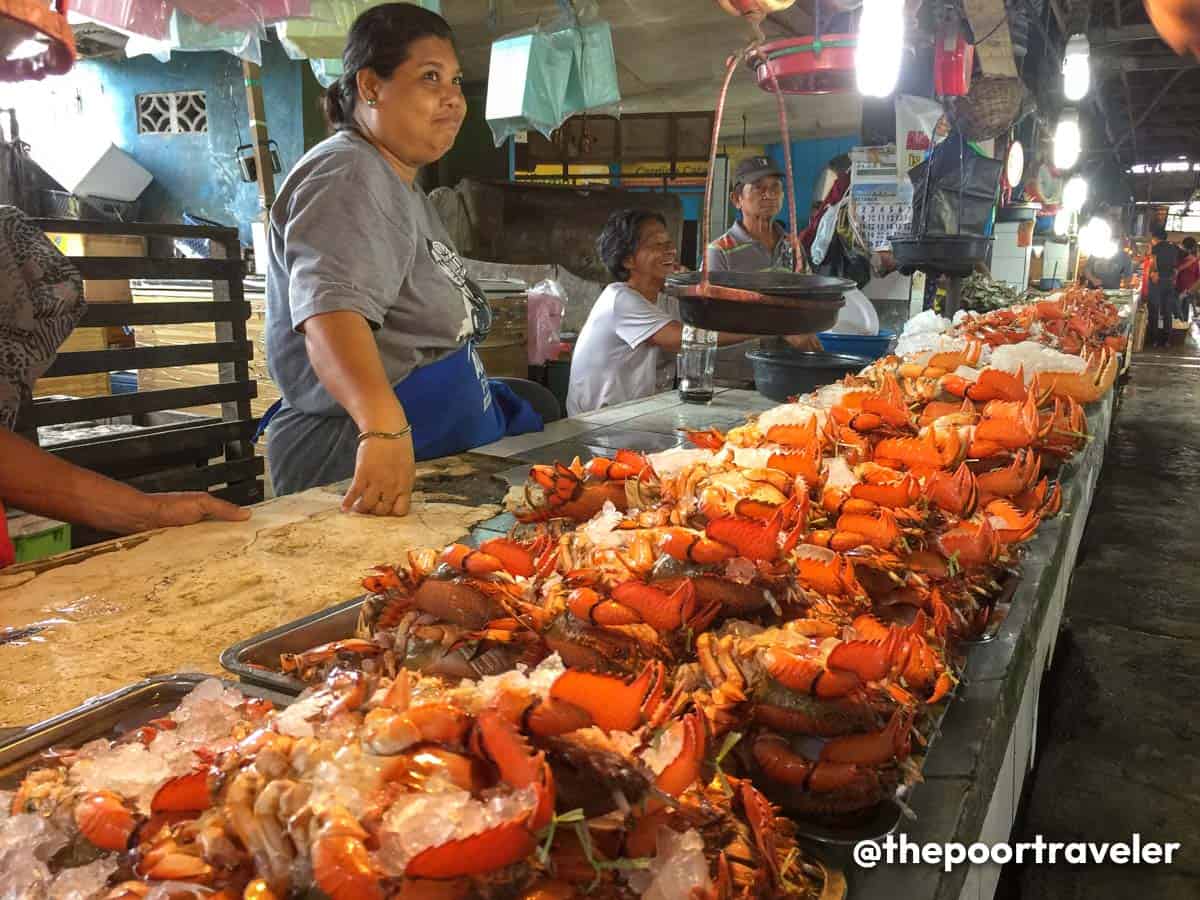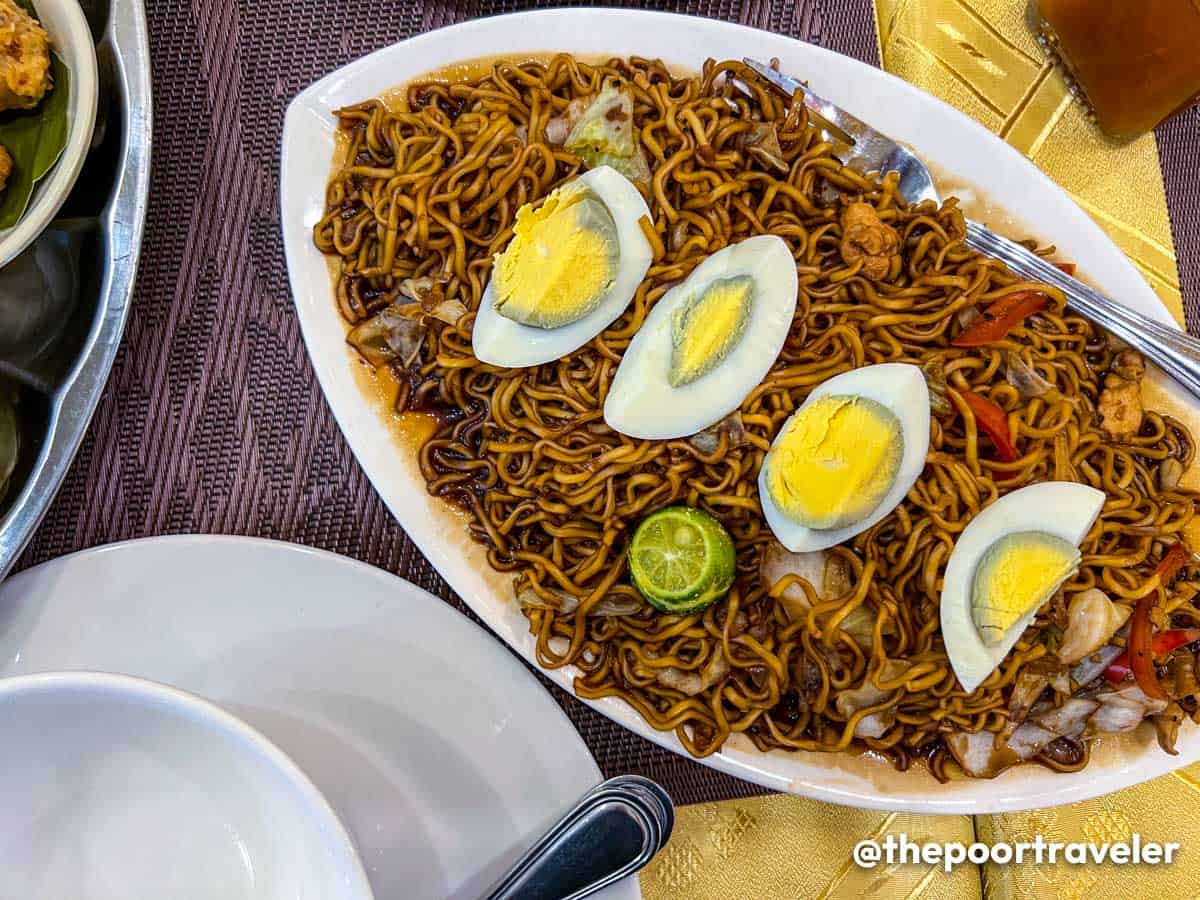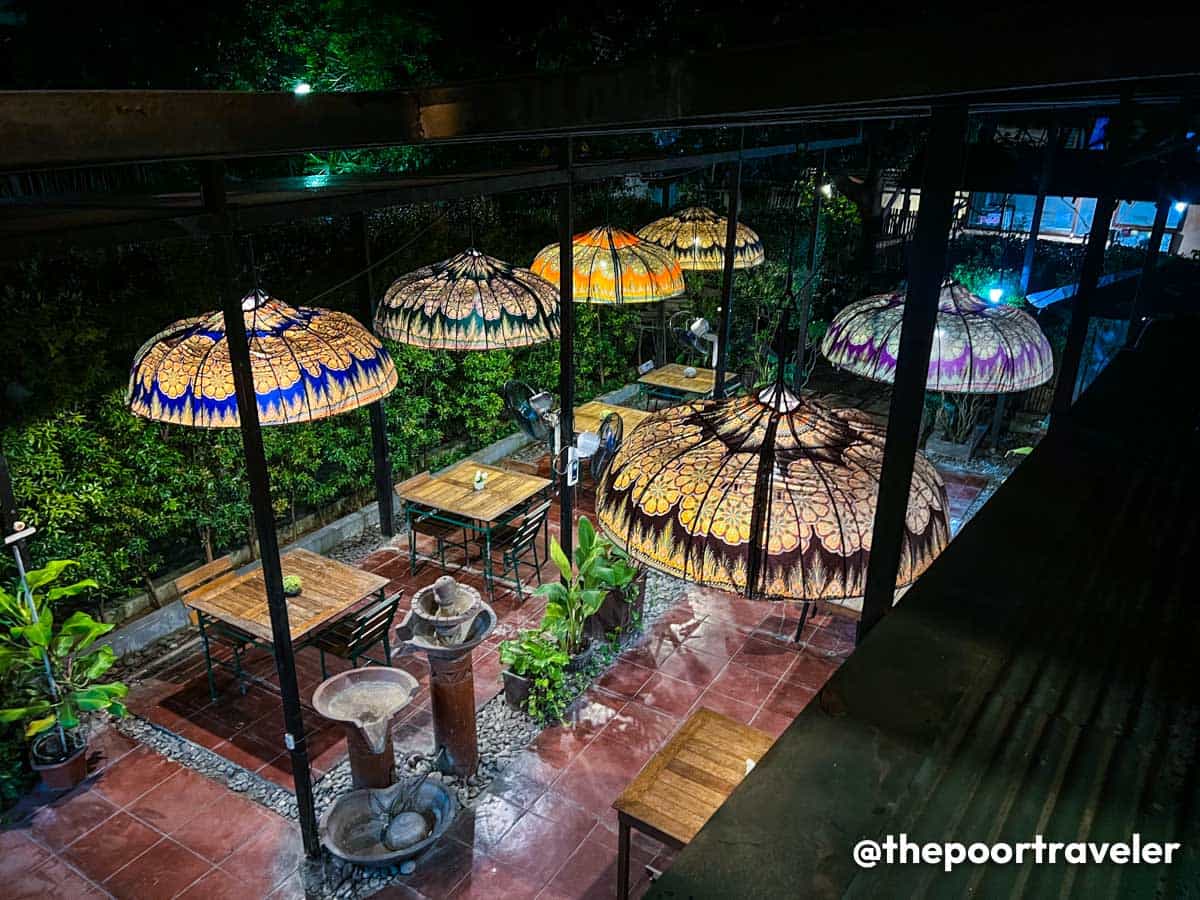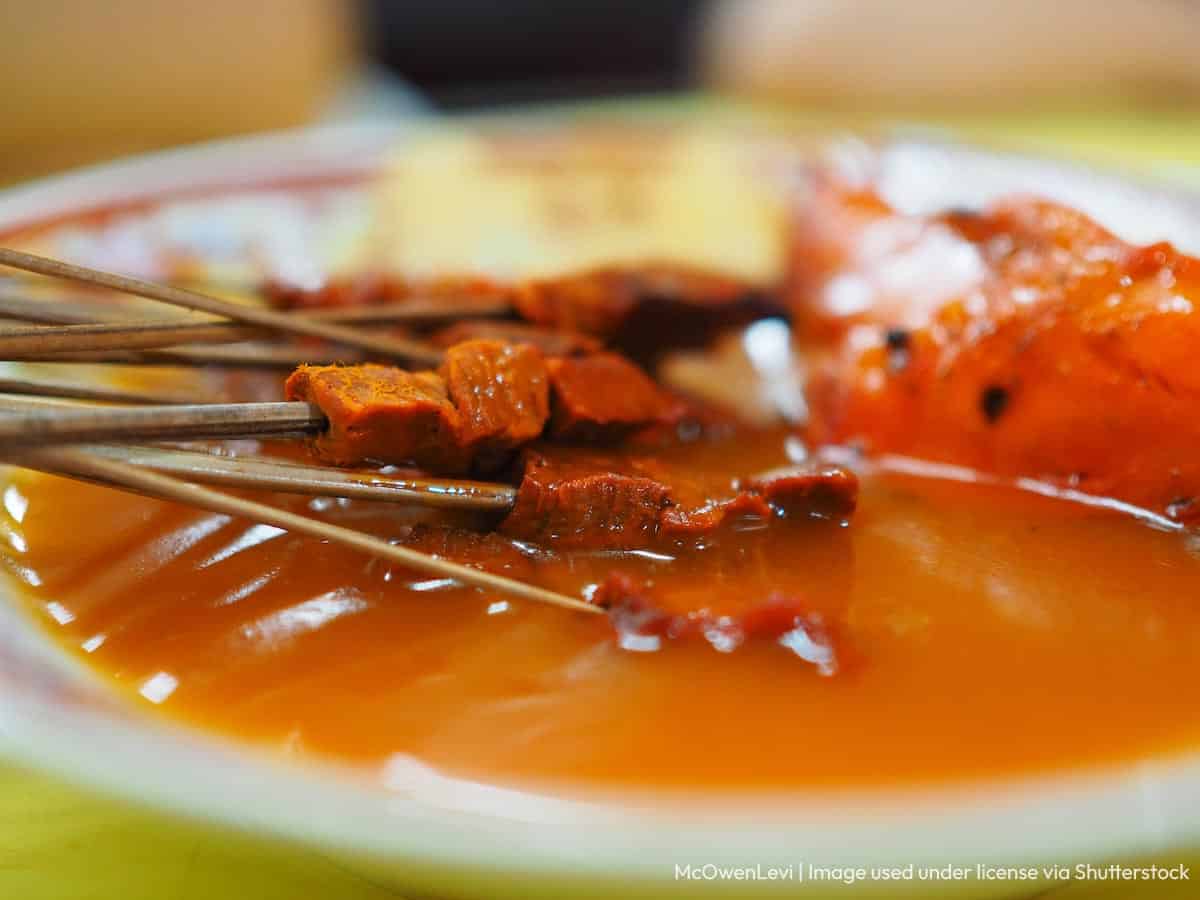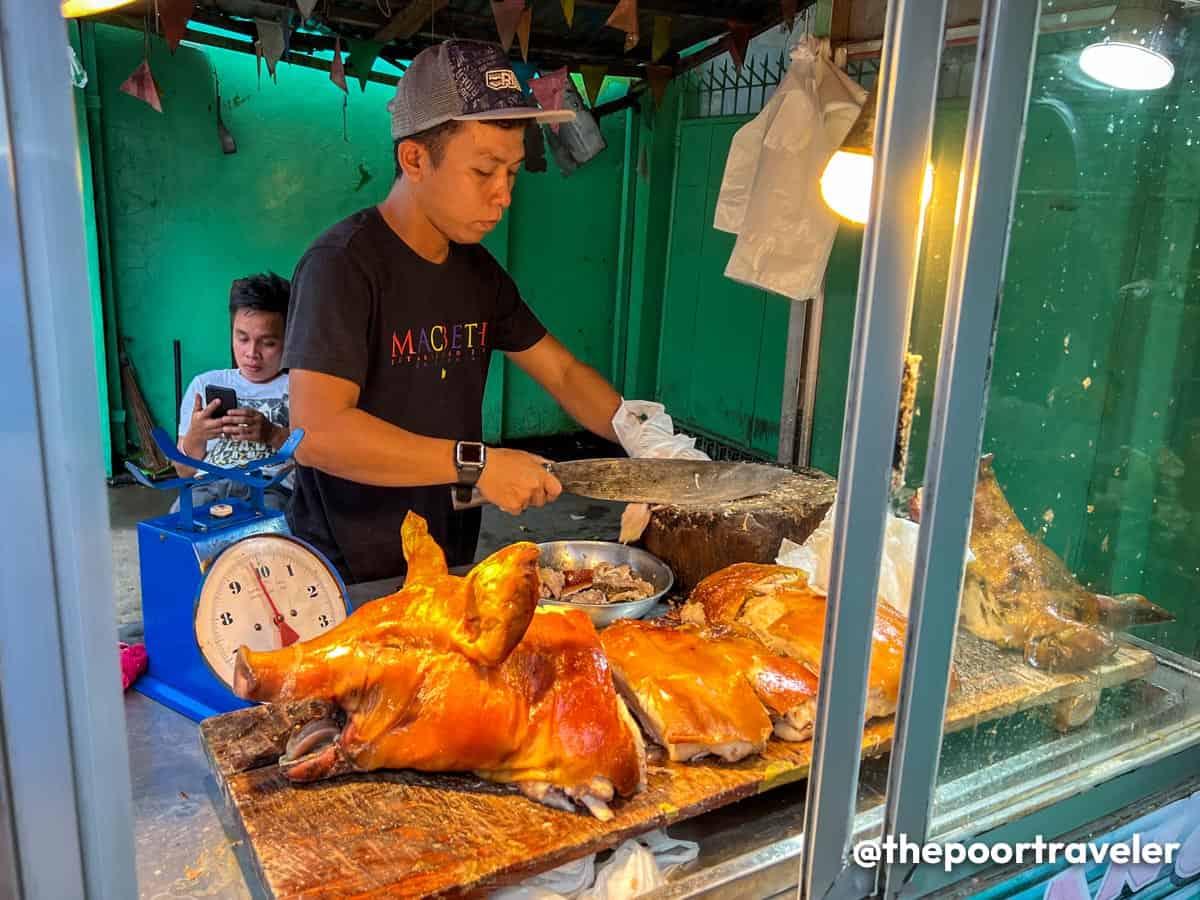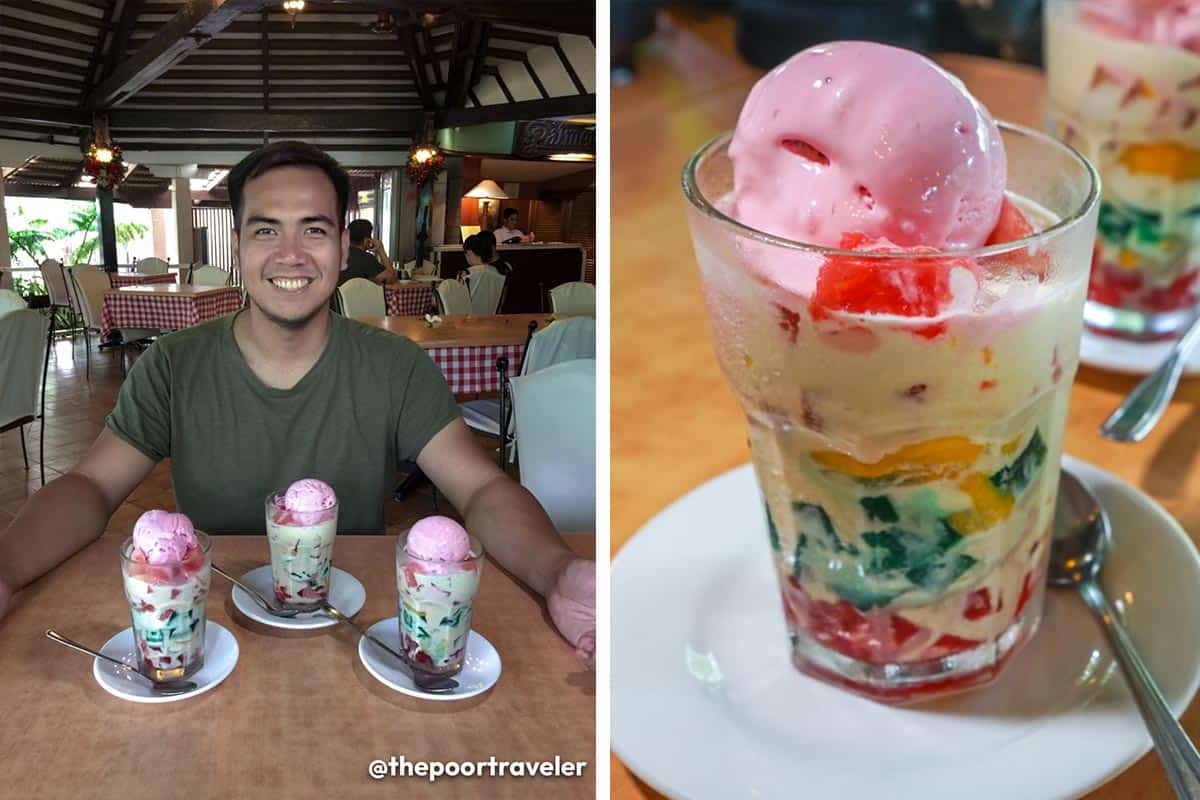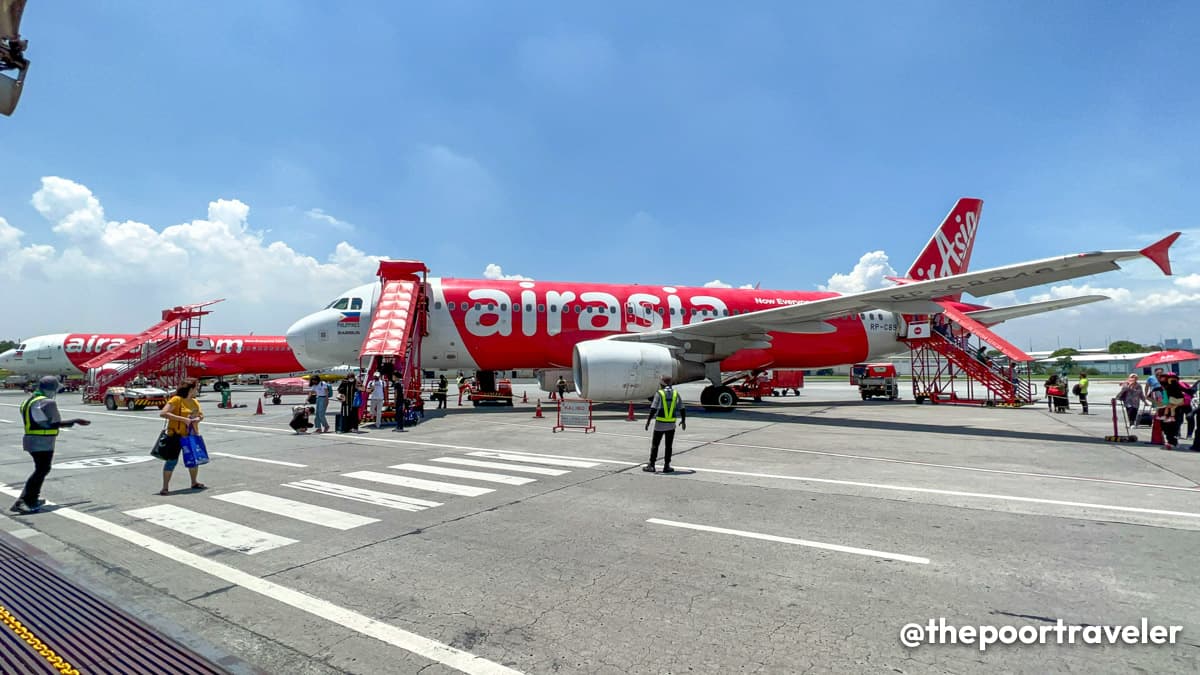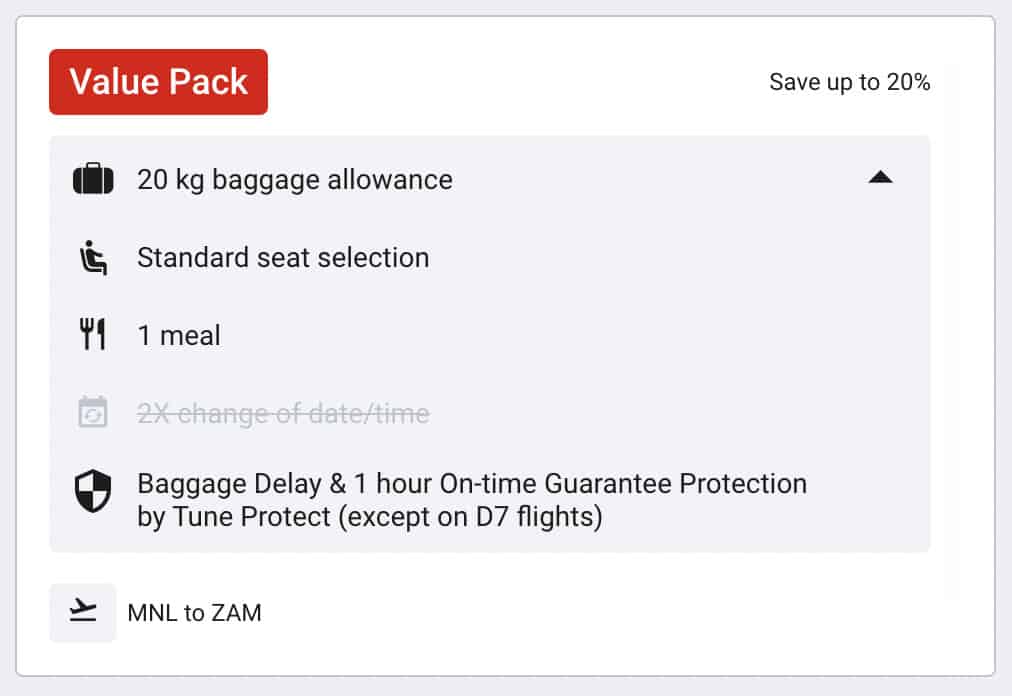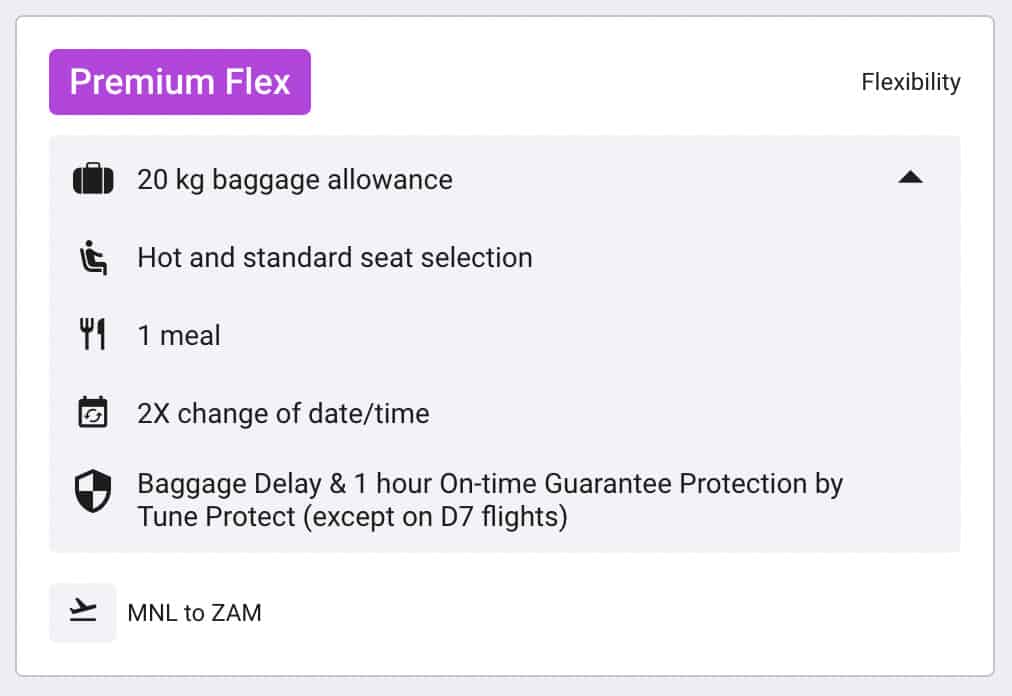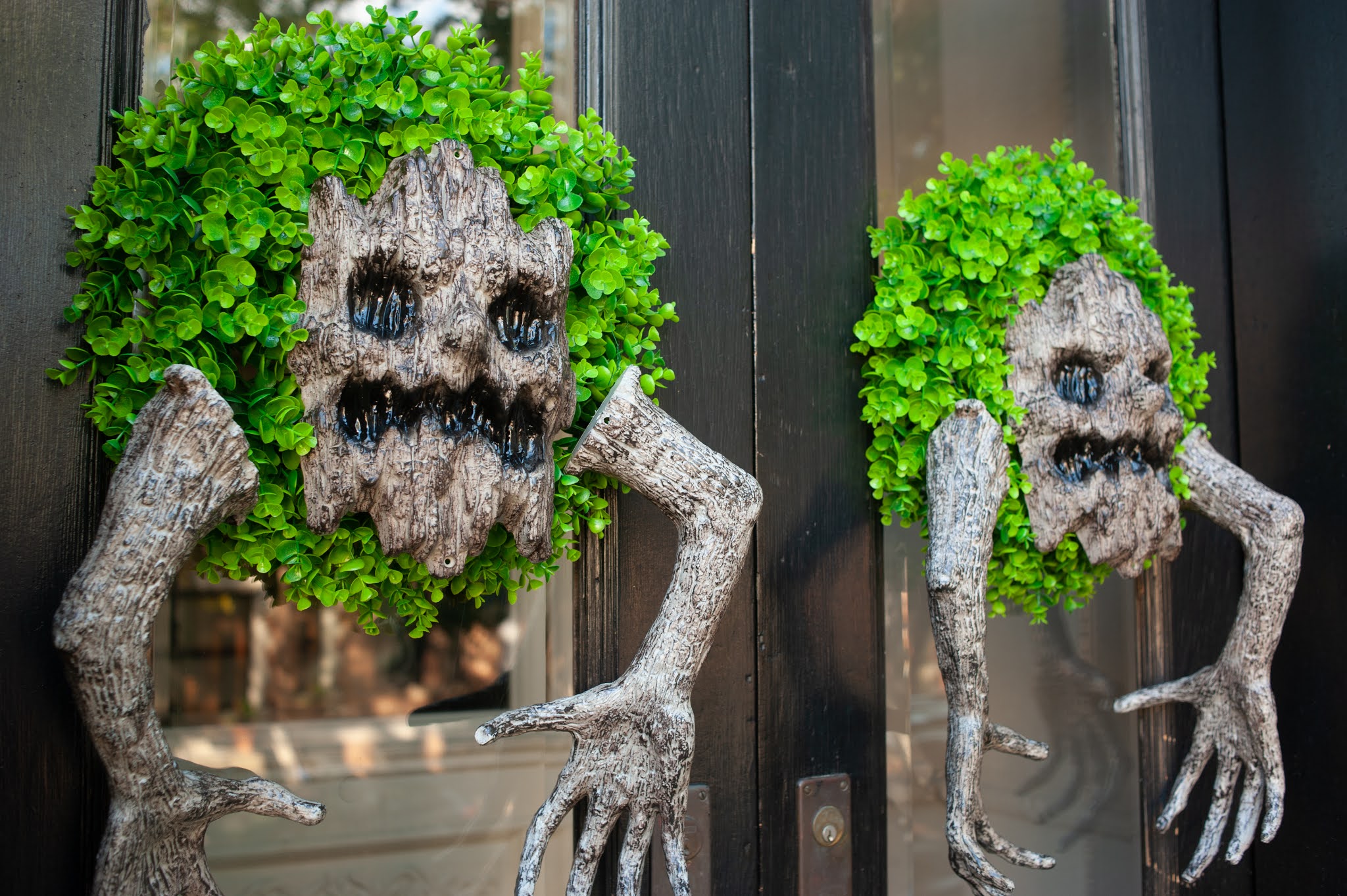7 Must-Try ZAMBOANGA CITY Restaurants & Food Spots
[ad_1]

When we say Zamboanga City is colorful, we’re not just referring to the color-blocked sail of the vinta or the rosy glow of Santa Cruz Grande Island’s Pink Beach. The vividness of Asia’s Latin City goes beyond what the eyes can see. Its intricate history as a settlement and kaleidoscopic mix of cultures are best experienced through another fundamental sense — the sense of taste.
Zamboanga City is one of our most-loved food destinations for the sheer range and diversity of what it can bring to the (dining) table. From the saucy red-orange sticks of satti to the motley flavors of knickerbocker, here are some of Zamboanga’s most sought-after culinary delights and where to find them.
WHAT’S COVERED IN THIS GUIDE?
Ever heard of curacha?
If it sounds familiar, it’s probably because it reminds you of La Cucaracha, a Mexican folk song about a cockroach that also became pretty popular in the Philippines. Curacha (in Chavacano) and cucaracha (in Spanish) mean the same — cockroach. And it’s no surprise given that Chavacano, Zamboanga’s dominant language, is a Spanish-based Creole.
But before you lose your appetite, know that we’re not going to ask you to go full Fear Factor in Zamboanga. Instead, we’re inviting you to have a taste of the most mouth-watering crustaceans that the region has to offer — spanner crabs!
Curacha got its name because of its spiky, hairy appearance that kinda resembles you-know-what. But if you look closely, it kinda appears like the love child of a wide crab and a long lobster. And because it packs more meat and more flavor than the crabs we’re used to, they are sought after. Thankfully, they thrive in the waters surrounding the region.
For many, the best place to have a taste of curacha is Alavar Seafood Restaurant, which serves curacha cooked in and doused with its famous specialty sauce, which is made from coconut milk, aligue (crab roe paste) and various spices. This super rich sauce combined with the seafood umami bombs that are curacha, you’ll never taste other crab dishes the same way again.
But be warned: It’s not cheap. You can order curacha by the kilo (minimum 1 kg). The last time we dined here, a kilo of it in alavar sauce costs P1500 to P1700, depending on the size of the crabs.
The sauce alone is unforgettable. It’s so popular that tourists drop by Alavar on the way to the airport to take home frozen packs of it.
Alavar Seafood Restaurant
Address: 173 Don Alfaro St, Zamboanga City
Operating Hours: Monday-Tuesday 10:00 am – 8:00 pm;
Wednesday, Thursday, Saturday, 10:00 am – 9:00 pm;
Friday, Sunday 10:00 am – 10:00 pm
Specialty: Curacha in Alavar Sauce
But if you’d rather take home freshly caught curacha, head over to Aderes Flea Market in Guiwan. You can purchase uncooked curacha at a lower price here, along with lobsters and other seafood.
How familiar are you with Moro dishes? A little bit? Not quite? Not at all?
If you live in Metro Manila or nearby areas, you probably haven’t tried it. (Or in my case before my Zamboanga trip, not even heard of it.) We’re used to dishes from Luzon and Visayas. Many of us are even more acquainted with foreign fare. So when in Zamboanga, have a taste of Moro cuisine!
More than a third of Zamboanga City’s population practice Islam. The Moros, Filipino Muslims, have developed a food culture that is fascinatingly different from other regions. While garlic, onions and ginger remain common ingredients, the Moros like to also use spices like galangal, lemongrass, kaffir lime and turmeric, which are more usual in our maritime Southeast Asian neighbors.
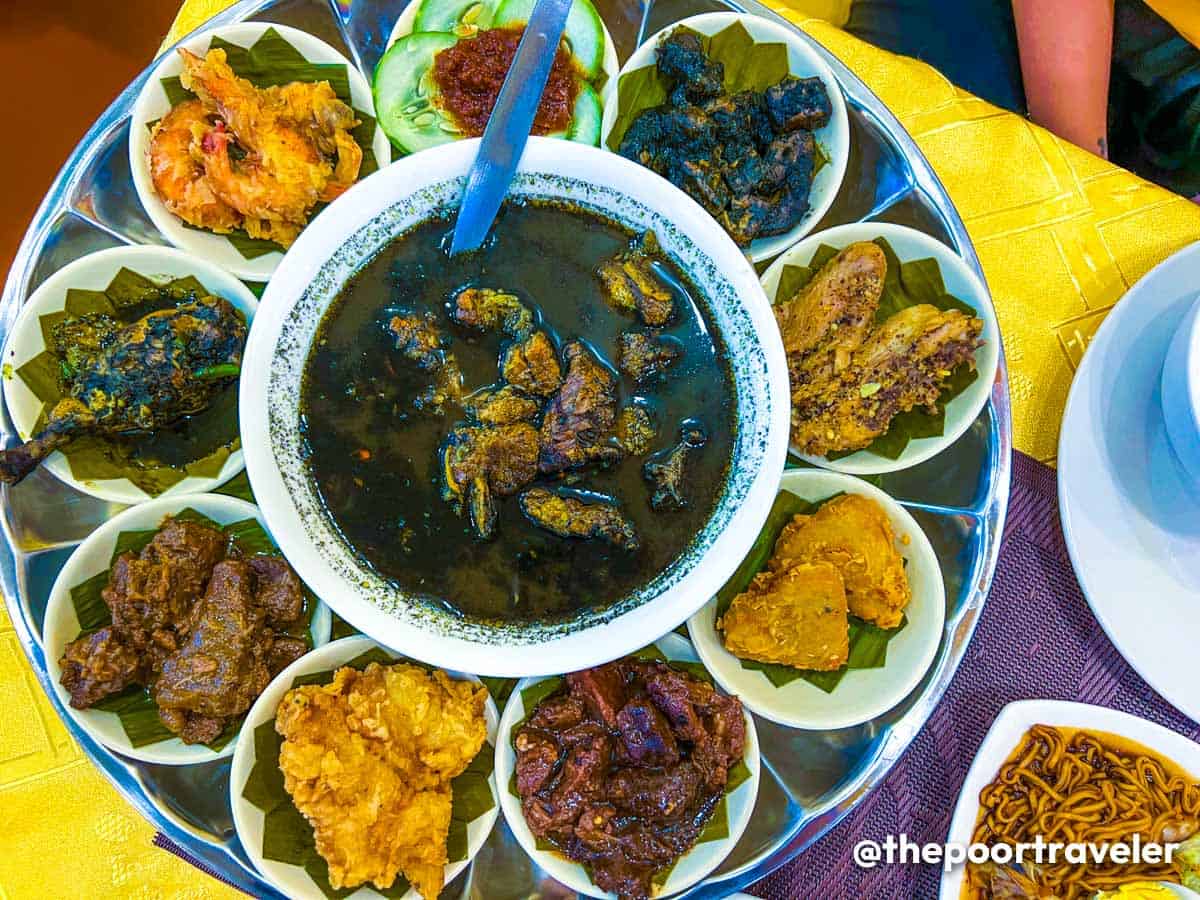
You’ll also notice that the Tausugs love using coconut milk and — get this — burnt or charred coconut, which gives many of its dishes its black appearance. It does look a little bit intimidating at first glance, but trust me, it’s super delicious. It doesn’t taste burnt at all, but it provides depth and complexity to its taste that is quite hard to describe. You’ve gotta taste it yourself.
In Zamboanga City, the most convenient place for tourists to sample Moro dishes is Bay Tal Mal. It’s because they serve latal (P749), which is a platter of various Tausug dishes including the following:
- Tiyulah itum (tiyula itum or tiulah itum, literally “black soup”), beef in black broth made with burnt coconut and spices.
- Beef kulma, beef cubes stewed in a curry sauce.
- Piyassak, beef liver cubes cooked with pounded spices, charred coconut and coconut milk
- Chicken piyanggang, chicken marinated in burnt coconut and various spices and then grilled.
- Chicken kiyaliya, chicken stewed in coconut milk with lemongrass, turmeric, ginger and other spices.
- Beef adobo
- Fried fish
- Fried shrimp or squid
- Kiyaliya kapaya, papaya; or cucumber sambal (the sambal is so fab delish!)
Although not on the menu, I think one of the dishes on our platter was utak-utak (fried fish cake).
You can enjoy this platter of delicacies with rice. But we usually add a plate of mee goreng (P189), which is served with hard boiled egg. We just love mie goreng so we order it whenever we spot it on the menu. (LOL.) But they have a lot more items on its menu.
When I tried it for the first time, Bay Tal Mal was still located along Mayor Jaldon Street. But it has since moved to the 4th level of SM Mindpro.
Bay Tal Mal Restaurant
Address: 4th floor, SM Mindpro, La Purisima St, Zamboanga City
Operating Hours: Monday-Thursday, 10am-8pm; Friday-Sunday, 10am-9pm
Specialty: Latal (platter of Tausug dishes)
Another restaurant that serves this Tausug tray of goodness is Dennis Coffee Garden, situated near the airport. Here, they call it dulang (P950), but it’s basically the same. But while Bay Tal Mal’s platter has 10 different dishes, Dennis’s has six.
Speaking of Dennis Coffee Garden…
Dennis Coffee Garden‘s roots can be traced back all the way to 1962 Jolo, Sulu, where a small cafe called Omar’s Place was established. Sixty years later, the name has changed and multiple branches have sprouted including this one in Zamboanga City.
We already mentioned the dulang or latal that they serve here. But it is more famous for something else — you guessed it — COFFEE! Dennis Coffee Garden takes pride in their authentic coffee called the kahawa sug, which can be served hot or iced. It’s more on the strong end of the spectrum, so if you favor bold coffee, this could be for you! The iced version, however, is served with milk.
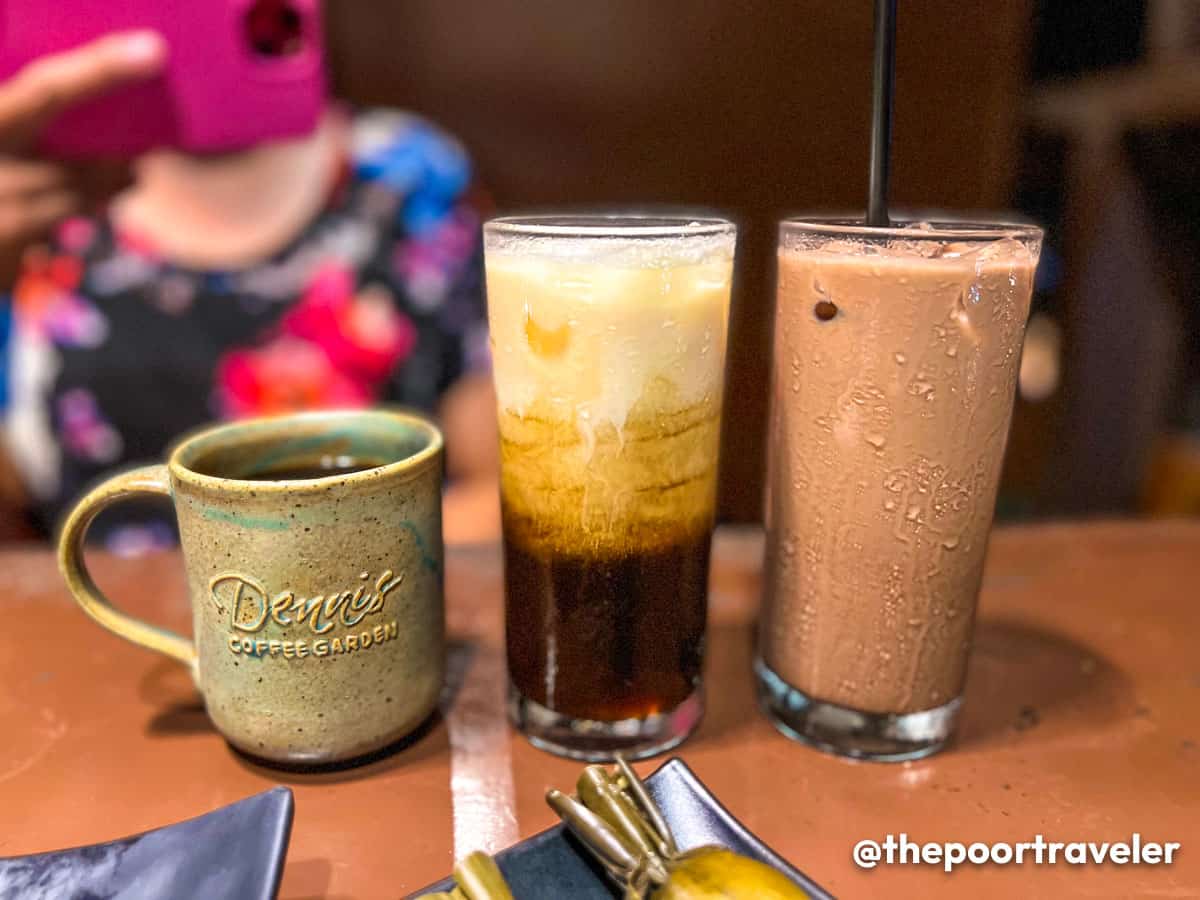
Aside from Sulu coffee, it is also popular for their bangbang sug or native Tausug pastries. We worked up an appetite earlier that day so we decided to order all of the items on their snack menu! Besides, we really wanted to try them all! Each item costs P65.
- Jualan saing, deep-fried bananas with sweetened coconut dip (think of it as a deconstructed banana que)
- Jualan panggih, deep-fried sweet potatoes with sweetened coconut dip (sort of a deconstructed camote que)
- Daral, crepe with sweet filling made of coconut (filling tastes like bukayo)
- Panggih-panggih, deep-fried flour rings
- Wadjit, glutinous rice cooked in coconut milk (unavailable during our visit)
- Pitis, glutinous rice flour cakes with coconut filling, wrapped in banana leaves
- Patulakan, punded rice with milk and grated coconut, wrapped in banana leaves
- Biyaki, grated sweet corn cakes, wrapped in corn husks then steamed
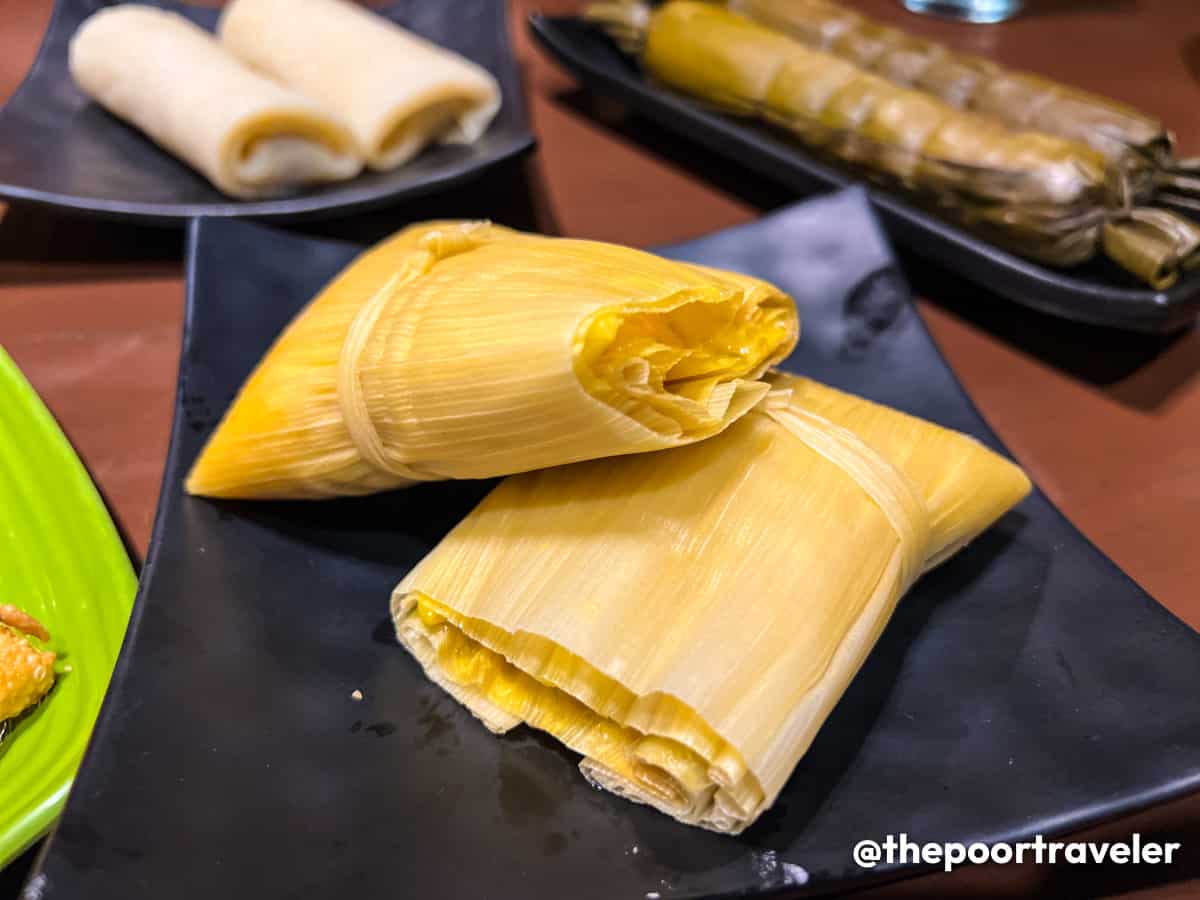
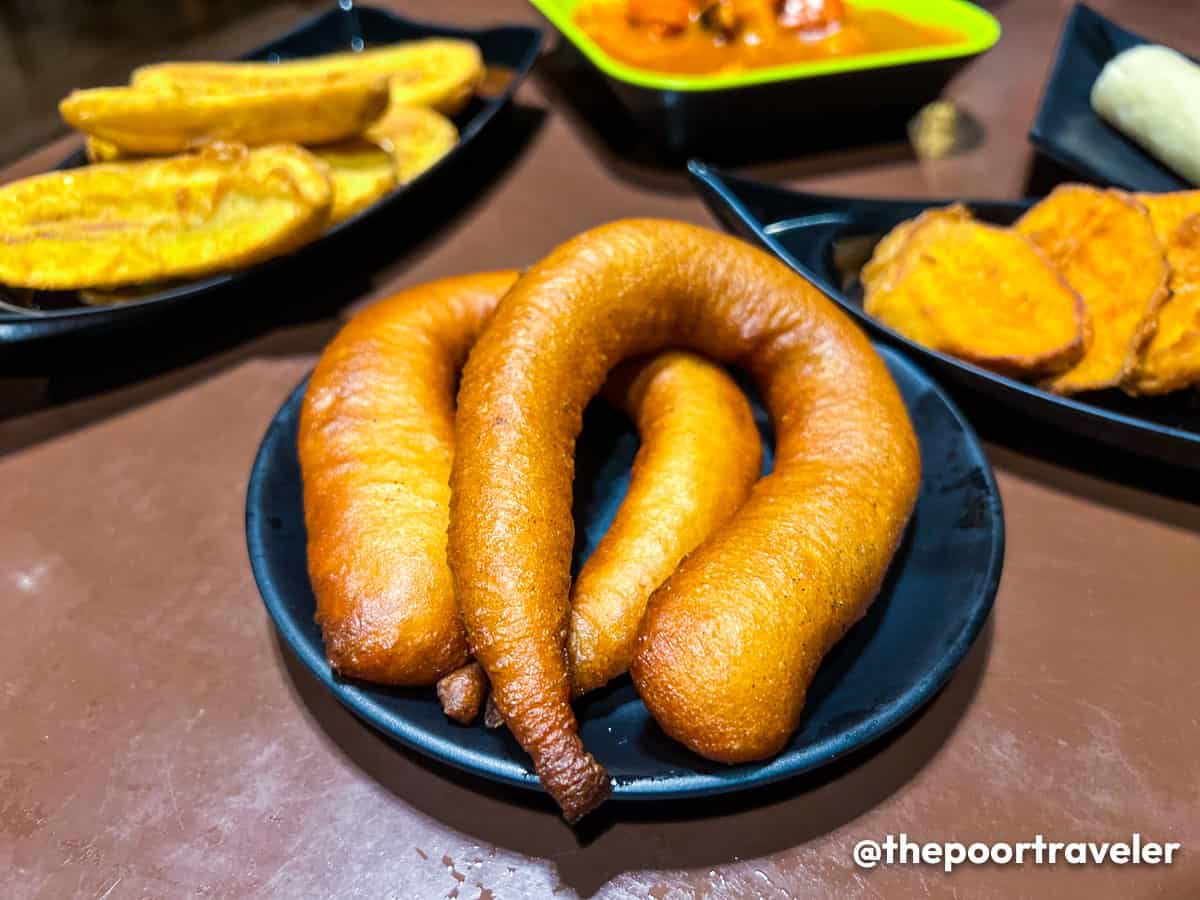
We also ordered pastil, which is similar to empanada with togue filling and served with a sweet and spicy sauce. (We also tried pastil in Tawi-tawi but it had bihon noodles as filling.)
Out of all of this, we enjoyed jualan saing, daral, biyaki and panggih-panggih the most!
Dennis Coffee Garden
Address: San Jose Road, Baliwasan, Zamboanga City
Operating hours: Daily 10:00 am – 10:00 pm
Specialty: kahawa sug (Sulu coffee) and Tausug pastries
As we explored Zamboanga City, we couldn’t help but notice that a lot of establishments serve so-called satti. We even spotted a number of regular-looking houses with signs that read, “We serve satti”. It got us incredibly curious! Satti sounds like satay (chicken satay, beef satay), so I had my ideas on what it could be. But many satti signages had illustrations of bowls, not sticks of meat, which confused us at first.
Well, well, it turned out that satti is indeed similar to satay (grilled skewered meat). But in this part of the world, it is usually served half-dipped in a bowl of red-orange spicy sauce with cubes of molded rice. And to my surprise, this is actually a breakfast favorite! Nothing beats a spicy kick to start the day!
When we asked the locals (mostly tricycle drivers) for the best satti place in the city, all fingers pointed at Jimmy’s Satti Haus. Unfortunately, due to time constraints, we failed to pay a visit. Too bad!
(That said, we were able to try satti at Dennis Coffee Garden! I’m a sucker for anything grilled and spicy, so it was love at first bite for me. I still wish I got to try Jimmy’s though. But I guess this gives me a reason to return to Zamboanga!)
Jimmy’s Satti Haus
Address: Pilat Street, Zamboanga City
Operating hours: 2:00 AM – 6:00 PM
Specialty: Satti
If you’re craving pork, you might be surprised to know that one area in Zamboanga has mastered the art of making lechon! Yes, whole pig roasted to perfection! Here in Tetuan, lechon is sold at kiosks stationed along the road. And there are lots of them here!
I was quite shocked to learn about it at first because the city has a significant Muslim population. Before setting foot here for the first time, I initially (mistakenly) assumed that pork — a staple protein in Pinoy kitchens elsewhere — would be notably absent in most parts of the city because it is forbidden in Islam. But there it was, a street lined with pork lechon stalls selling kilo after kilo of suckling pig.
When we asked locals for recommendations, one establishment that was consistently mentioned was Prince Tasty Lechon. They have multiple stalls throughout the city, but we chose the one in Tetuan, just a short walk from Alavar.
Like others beside it, Prince is a small stall with a suckling pig on display as a staff member chops away. You can ask for a piece of the crispy skin to have a taste. A kilo costs P550. You can also order half a kilo, which is at P350. You can have it as a whole slab or have it chopped.
Tetuan lechon is often compared to Cebu’s more famous version. Once you taste it, it’s not difficult to understand why. It’s just so flavorful! The skin is super crispy but not hard; it breaks with the gentlest of bites. The meat is moist, juicy and tender. The combination of calamansi, garlic, onions, pepper, bay leaf and other herbs seeps so deep into the meat. We weren’t given any sauce. Not sure if it really is eaten without it or the staff just forgot. But regardless, there’s no need for it.
Prince Tasty Lechon
Address: Don Alfaro St., Tetuan, Zamboanga City
Open: 9:00 AM – 9:00 PM
So far, we’ve already covered mostly main courses and heavy proteins. How about we move on to dessert?
Here in Zamboanga City, no other dessert has reached the legendary status of the knickerbocker. The what?
Knickerbocker! Think of it as the fruitier, healthier stepsister of the halo-halo. This crazy colorful concoction is a mix of jellies and fresh fruits like watermelon, apple, pineapply and mango, drizzled with condensed milk and topped with shaved ice and strawberry ice cream. It’s bright, sweet, and creamy, perfect for washing down whatever lunch or dinner you had.
These days, you can enjoy a cup from vendors at Paseo del Mar, but if you’re after the original, head over to Hacienda de Palmeras Hotel and Restaurant, widely regarded as the establishment that invented this tropical dessert. The restaurant is set in a garden in a quiet corner of the city, but still easily accessible by jeepney or tricycle.
Hacienda de Palmeras Hotel and Restaurant
Address: Pasonanca Road, Sta. Maria, Zamboanga City
Operating Hours: Tuesday-Friday 10am-10pm; Monday,Saturday 10am-8pm
Closed: Sundays
Specialty: Seafood and knickerbocker
Of course! Any TPT trip isn’t complete without pillaging the parks and back alleys for some good old-fashioned street food! These everyday accessible munchies tell a lot about the place, its people, and its culture. You can find street food anywhere, especially in busy areas like the public market and around the city hall.
Usual Pinoy faves like kikiam, fish balls and banana que are available, but you’ll also find something unique to the region. My favorite is chikalang. No, not chika lang. Chikalang! It’s a glutinous rice cake rolled in brown sugar. It’s very similar to pilipit or karioka, only bigger, denser, heavier and very very purple.
It’s usually among the many items on peddlers’ bilao. We had it at Paseo del Mar!
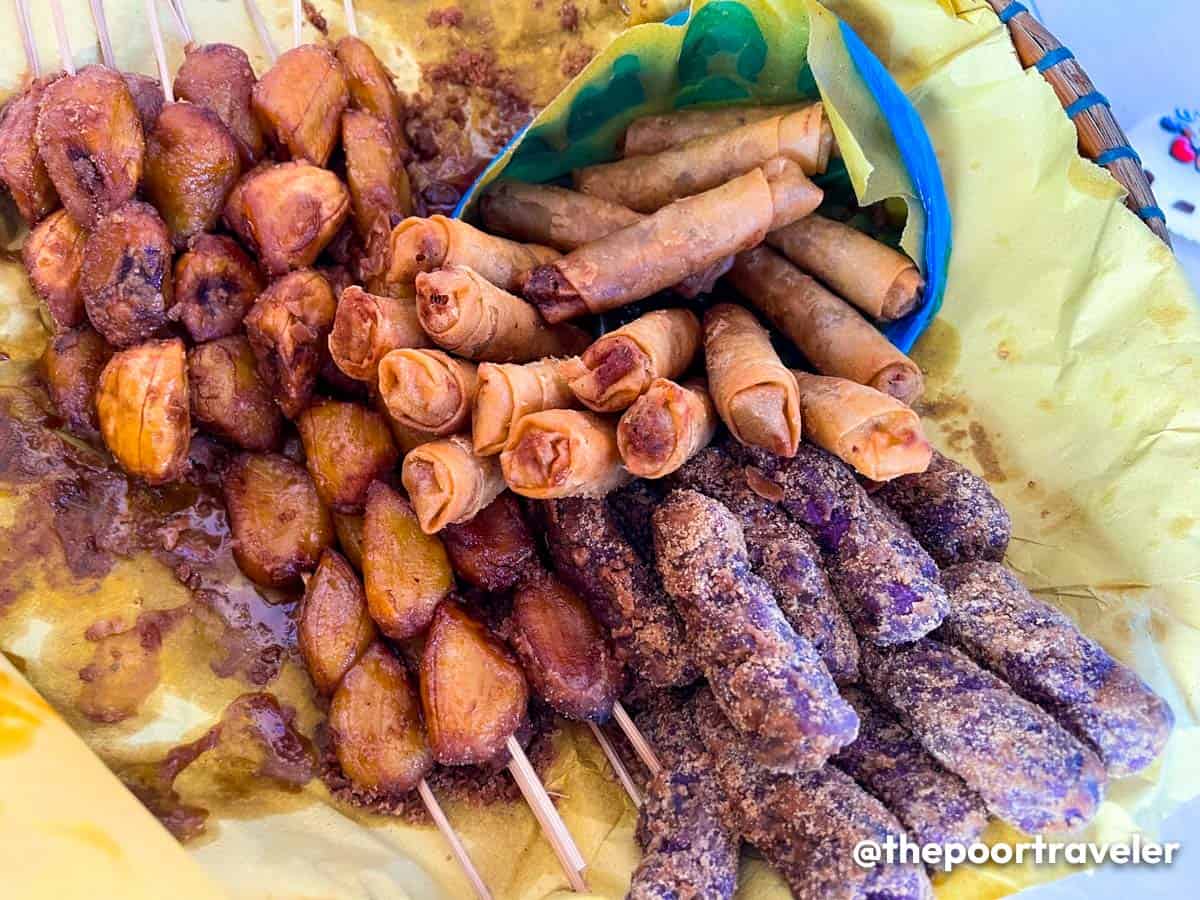
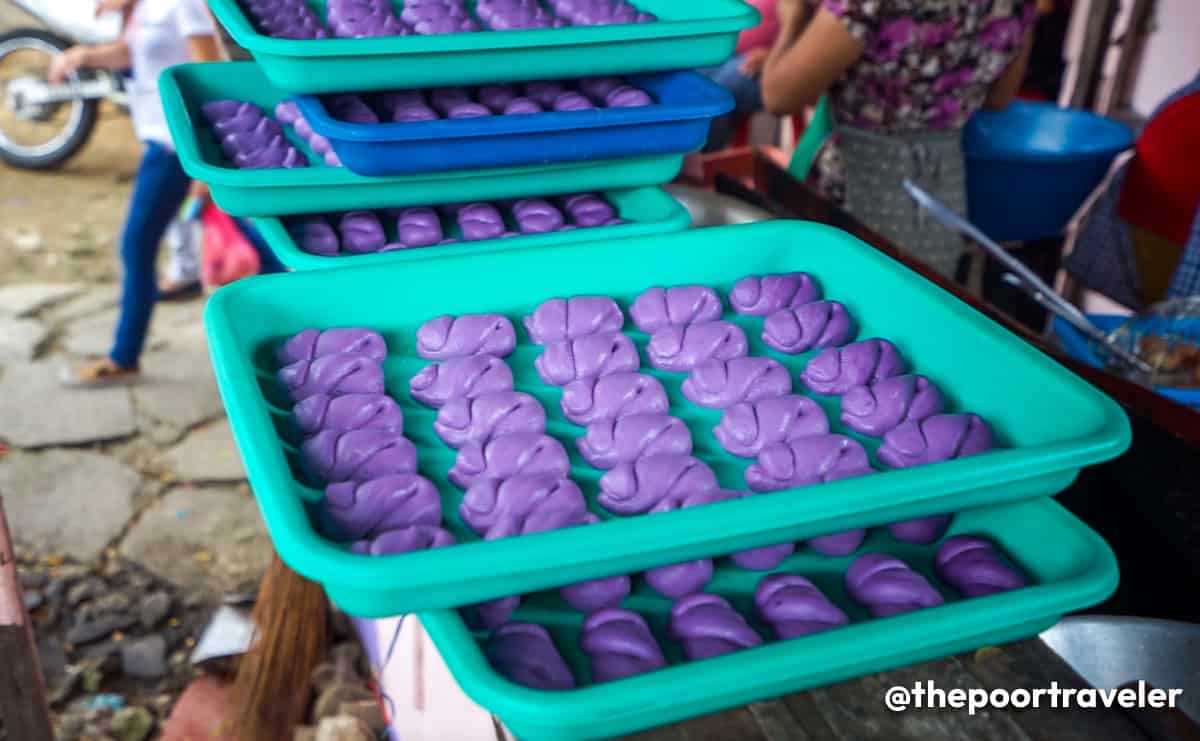
R.T. Lim Boulevard also hosts a number of street food vendors. Some of the street food choices are satay or “ihaw-ihaw”, pastil, and lokot-lokot. You’ll also find balut and penoy as soon as the sun starts to set.
On our last visit, we noticed locals selling something in styrofoam containers. Curious, we approached one and asked what was inside. To our (delightful) surprise, it was mie goreng (P35)! It’s served with fried egg on top and a calamansi on the side, and drizzled with hot sauce.
Coincidentally, we were just talking about craving noodles just moments before so we didn’t even think about it! We also had a nice conversation with Kuya Jul, the seller, as we stuffed our face with noodles.
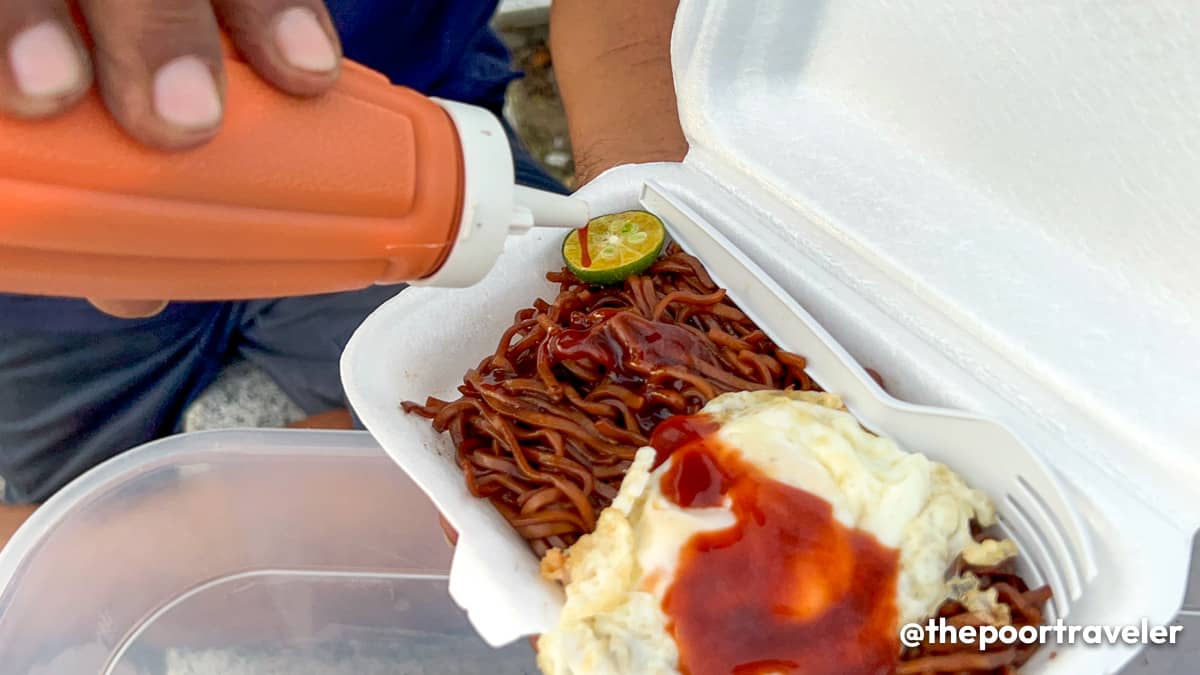
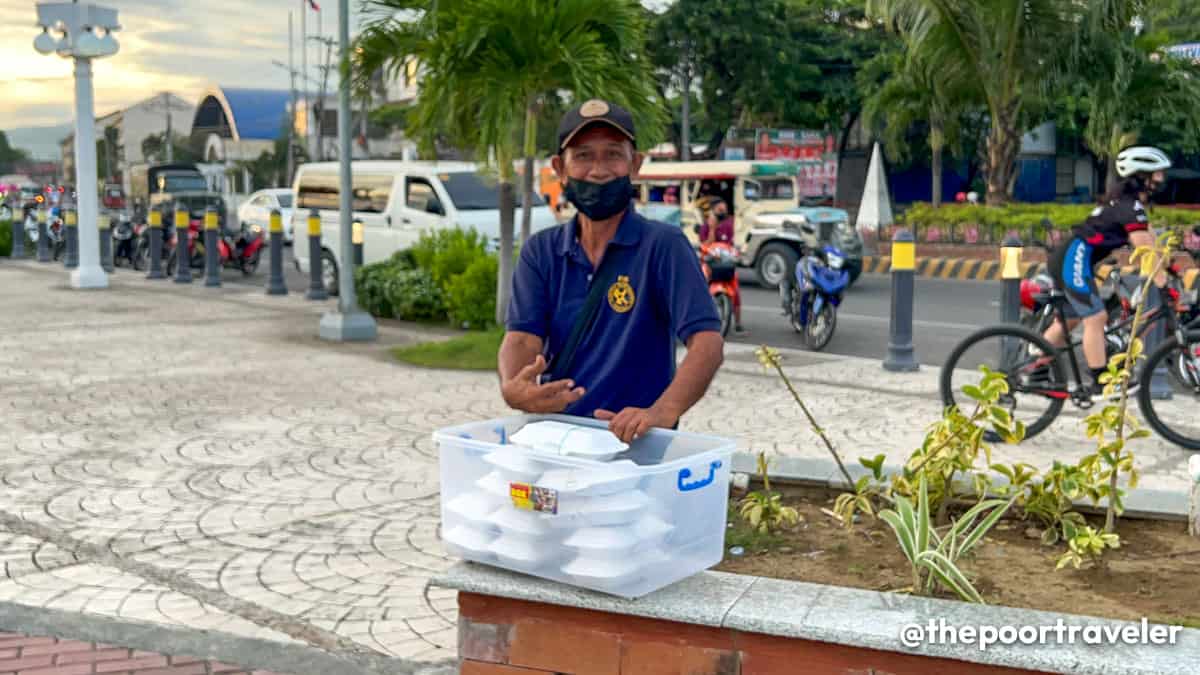
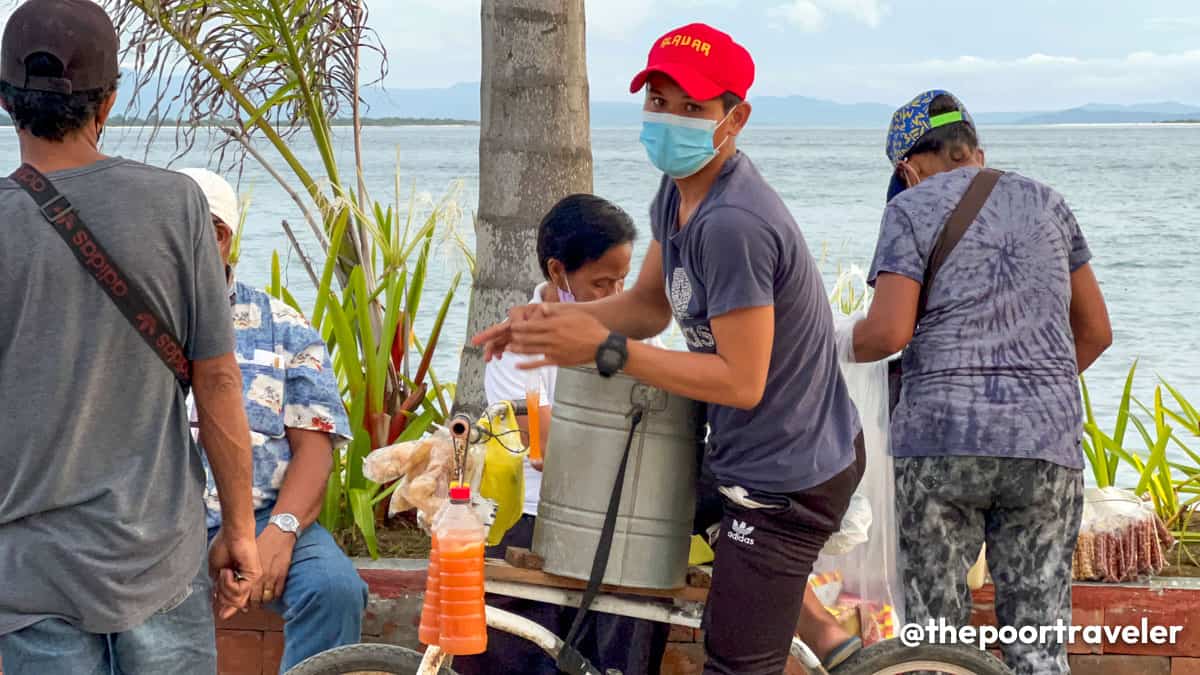
It is entirely possible to try all the restaurants and food spots mentioned above on your own. In your itinerary, you can insert a lunch or dinner stop, whichever is closest to the area you’re exploring that day. (We’ll publish a sample itinerary, so be sure to check back soon.)
But if you wish to have a more insightful experience, you may join a Food and Culture Tour, offered by iTravel Tourist Lane, led by Errold Bayona.
It was actually Errold who introduced to us these amazing foodie places years ago. So when I recently returned to Zamboanga, I already knew where to go to eat.
You may contact them through any of the following:
We paid for all of the food featured in this post.
AirAsia flies daily to Zamboanga City from Manila and offers some of the most budget-friendly fares. Each booking comes with a complimentary 7kg carry-on baggage allowance.
For a worry-free and more comfortable journey, you can also add a Value Pack, which includes 20kg check-in baggage allowance, standard selection, a meal, and Tune Protect insurance (for baggage delay & 1 hour on-time guarantee protection). Meanwhile, their Premium Flex option allows you to change the date and time of your flight up to two times.
If you’re coming from Manila, AirAsia’s Zamboanga flights operate from NAIA Terminal 4.
Disc: AirAsia covered our flights on our most recent trip, so it wouldn’t have been possible without them. So book na kayo with them if you decide to visit Zamboanga!
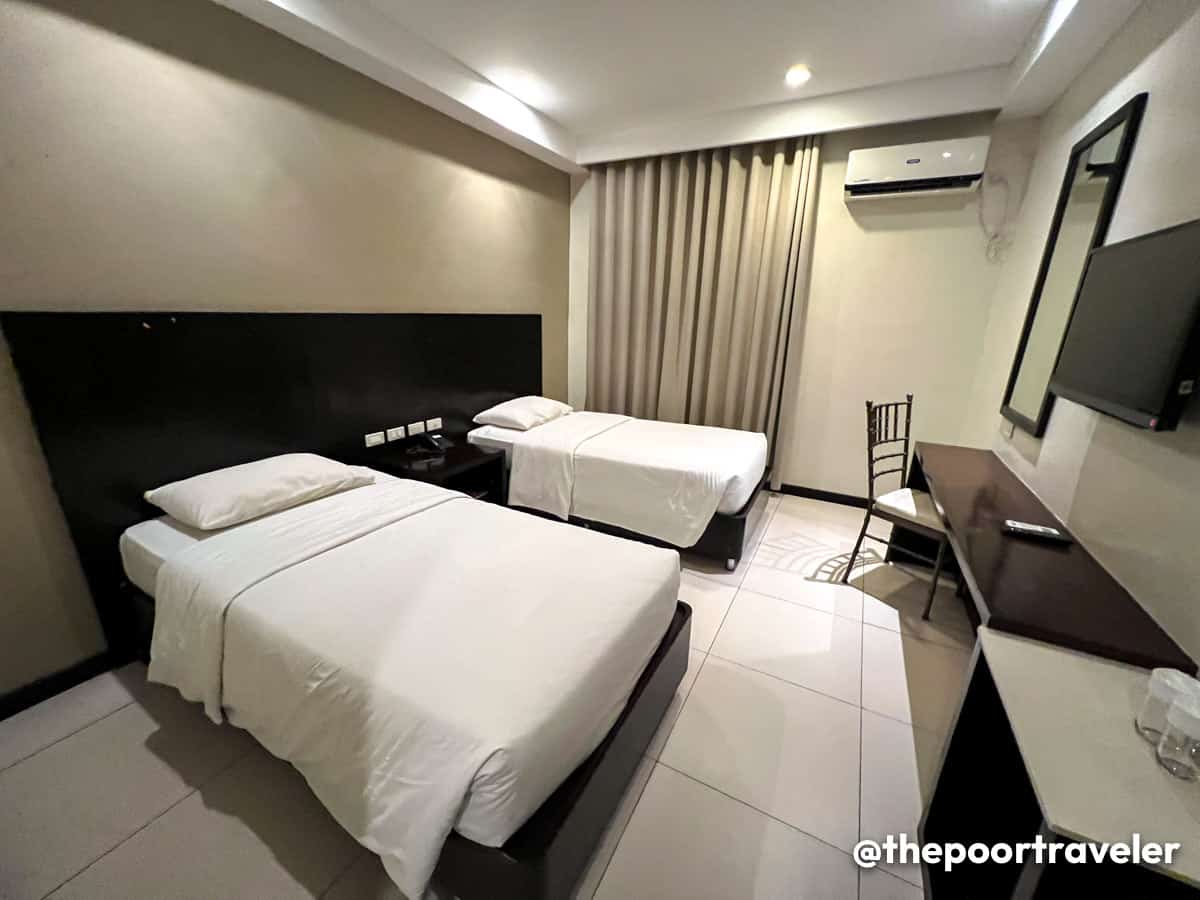
We have tried three different hotels in Zamboanga and all of them were decent and pleasant:
If you have a bigger budget, you may also check out these other properties in the area:
Words by: Yosh Dimen
Photos by: Yosh Dimen & Vins Carlos
[ad_2]
Source link

